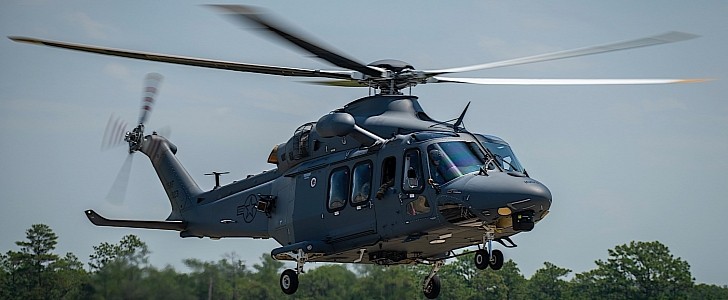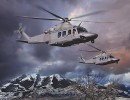The MH-139A Grey Wolf is described by one of its makers, Boeing, as a multi-mission helicopter. Derived from the AgustaWestland AW139, its main stated goal is to “protect intercontinental ballistic missiles and transport U.S. government officials and security forces.” The Air Force (USAF) plans to use it to replace the aging UH-1N Huey.
Viewed as the USAF’s first acquisitioned helicopter, the Grey Wolf was until recently being tested by mixed military and Boeing personnel. That changed as of August 12, when the machine got its military flight release. That meant a USAF-only crew was to fly it, and that's exactly what happened on August 17, at the Eglin Air Force Base in Florida, the military branch said this week.
The helicopter used for this test got the call sign Lycan, and was in the air as its pilots were trying to “validate processes, checklists, maintenance, emergency procedures and aircrew communication and coordination.”
With this hurdle now out of the way, fifteen more months of test flights will follow, trying to test “the safety of the aircraft and define the limits and maneuvers that can be performed.” Then, the USAF will really start buying these things as it plans to have some 80 of them in service in the mid-term.
As per Boeing, the Grey Wolf should be 50 percent faster, and capable of flying 50 percent farther than legacy platforms. It comes with “full autopilot capability to reduce pilot workload,” and is supposed to have low operating costs.
The exact technical specs for the Grey Wolf are not known, but the AW139 it is based on is powered by two Pratt & Whitney turboshaft engines rated at over 1,500 hp each. It has a top speed of 310 kph (193 mph), and a range of over 1,000 km (660 miles).
The helicopter used for this test got the call sign Lycan, and was in the air as its pilots were trying to “validate processes, checklists, maintenance, emergency procedures and aircrew communication and coordination.”
With this hurdle now out of the way, fifteen more months of test flights will follow, trying to test “the safety of the aircraft and define the limits and maneuvers that can be performed.” Then, the USAF will really start buying these things as it plans to have some 80 of them in service in the mid-term.
As per Boeing, the Grey Wolf should be 50 percent faster, and capable of flying 50 percent farther than legacy platforms. It comes with “full autopilot capability to reduce pilot workload,” and is supposed to have low operating costs.
The exact technical specs for the Grey Wolf are not known, but the AW139 it is based on is powered by two Pratt & Whitney turboshaft engines rated at over 1,500 hp each. It has a top speed of 310 kph (193 mph), and a range of over 1,000 km (660 miles).
















